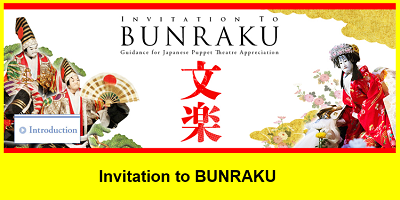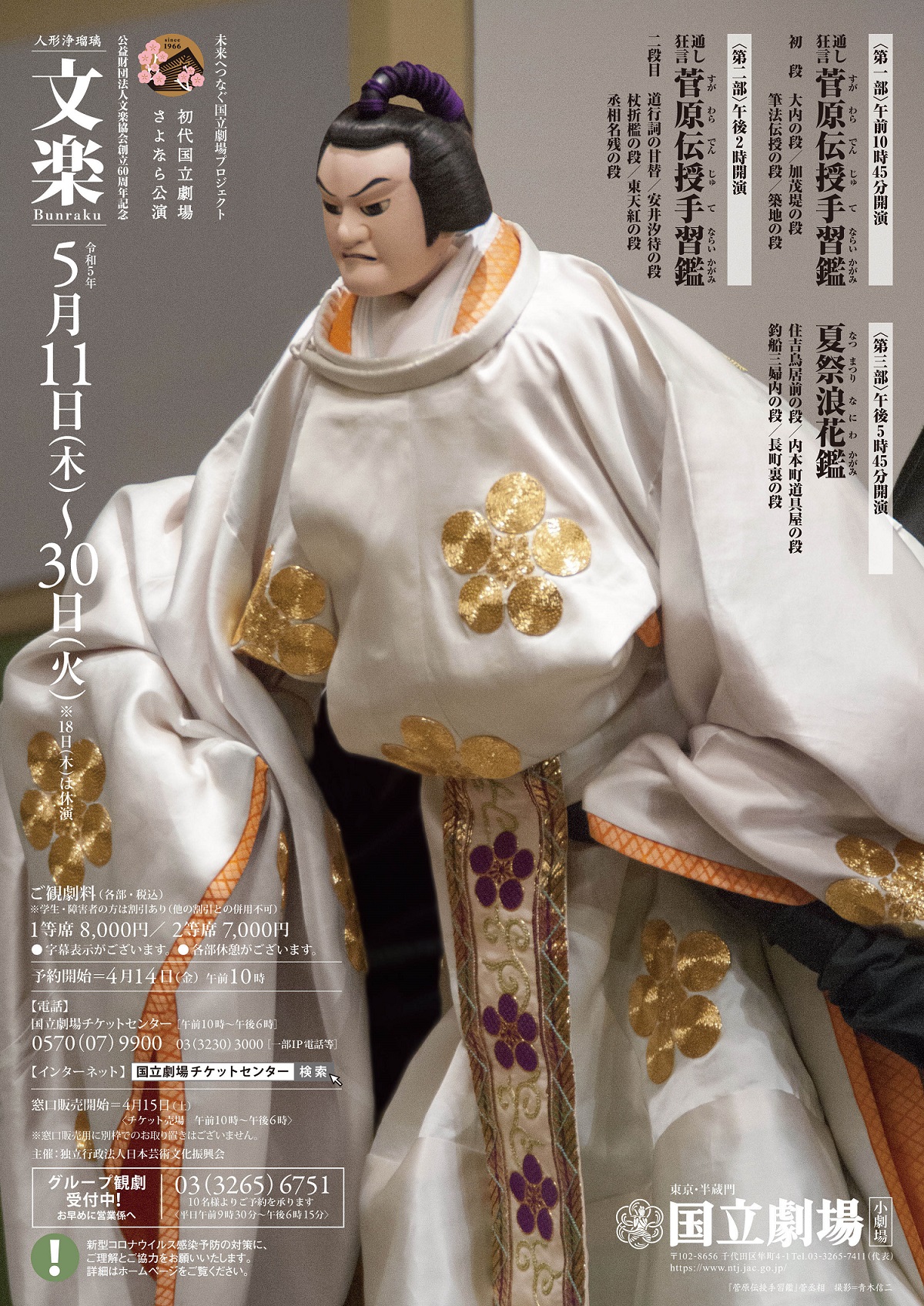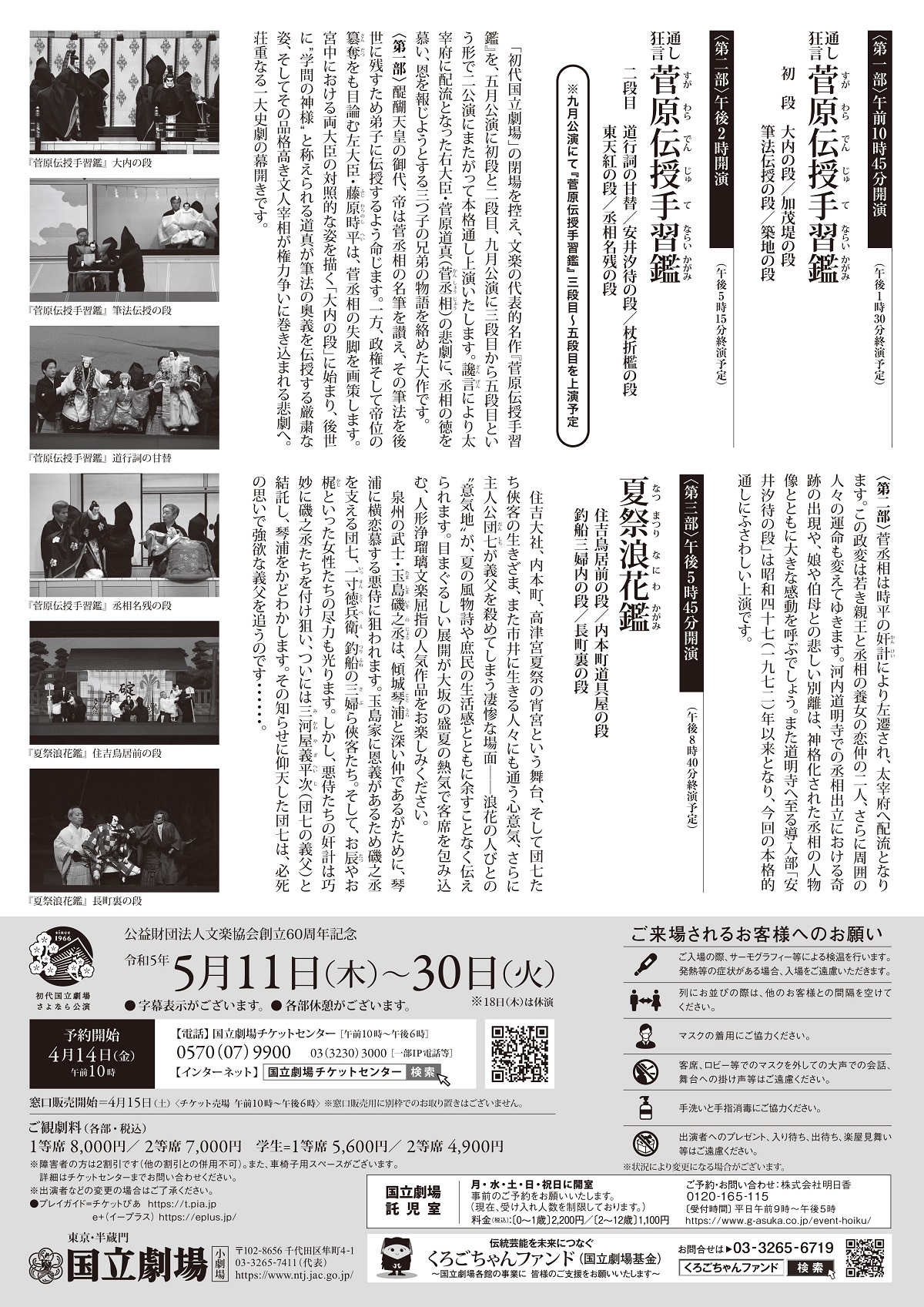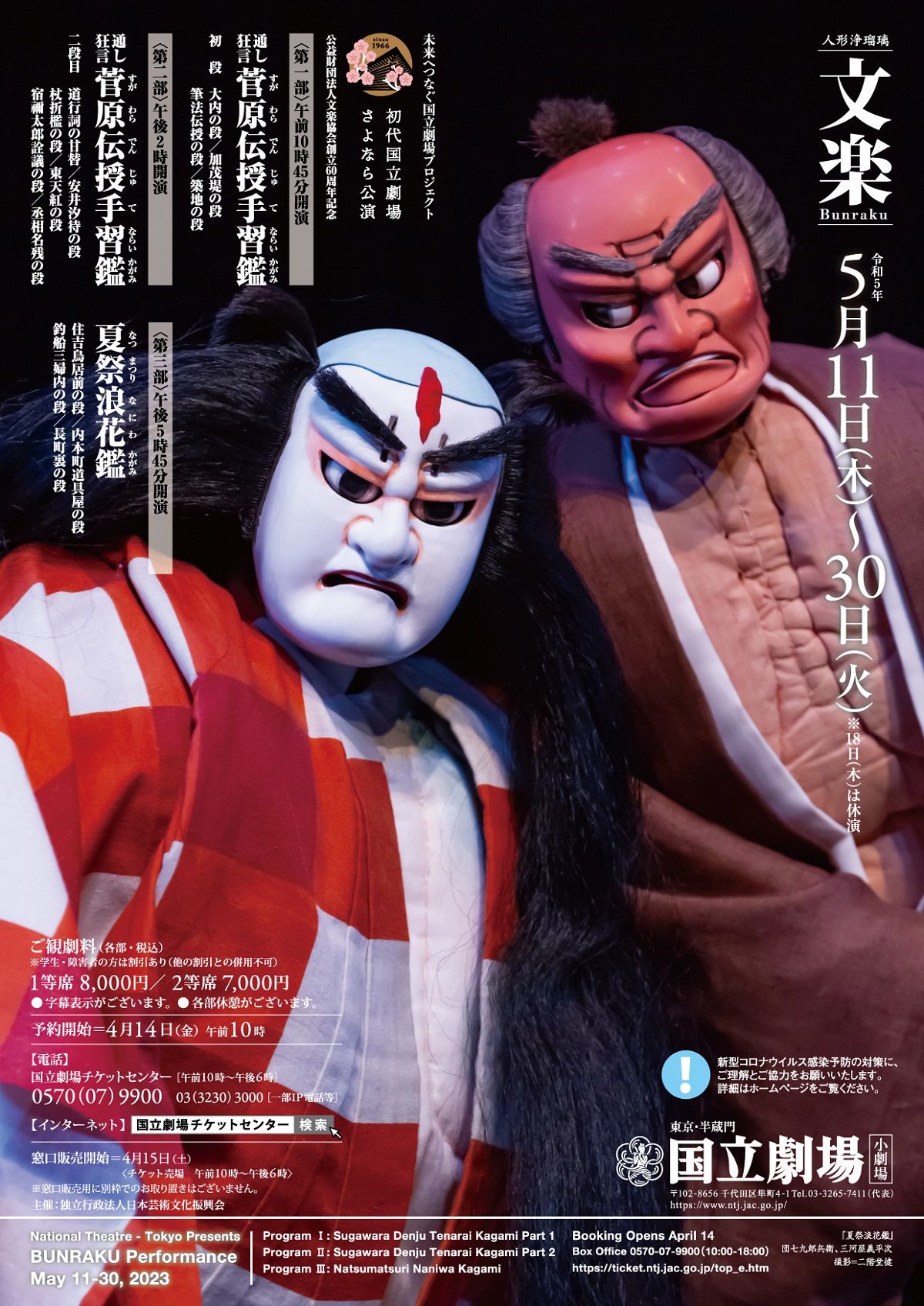- Bunraku
- National Theatre
Bunraku Performances
Bunraku Performances in May
Performance Dates : May 11 (Thu.) - May 30 (Tue.), 2023
No performance on 18 (Thu.)
Venue : National Theatre (Small Theatre)
Program Ⅰ (10:45–13:30)
Sugawara Denju Tenarai Kagami Part1
Program II (14:00-17:15)
Sugawara Denju Tenarai Kagami Part2
Program III (17:45-20:40)
Natsumatsuri Naniwa Kagami
Ticket Prices for Each Program(tax included)
Adults: 1st Grade ¥8,000 2nd Grade ¥7,000
Students: 1st Grade ¥5,600 2nd Grade ¥4,900
⇒Half-price tickets for the second half of Part 1 (Welcome! Bunraku Ticket)
Seating plan
*End times are estimates and could vary.
*English commentary through the Audio Guide service will be available starting with Act 1 on Monday, May 15.(Rental Fee: 800 yen incl. tax)Click here for details of audio guide.
*Subtitles: Available only in Japanese. Displayed on screen beside the stage.
*English synopsis is available. It is included in the paid Japanese brochure.
*There will be intermission.

Booking Opens
April 14 (Fri.), 10:00AM
-----------------------------------------------------------------------------
Box Office
0570-07-9900 (From overseas: +81-3-3230-3000) in Japanese and English
(10:00 - 18:00)
Online Booking : https://ticket.ntj.jac.go.jp/top_e.htm
-----------------------------------------------------------------------------
Counter Sales at the Theatre
available from April 15 (Sat.)
(Business hours: 10:00 – 18:00 )
in Japanese
Part 1/Part 2 Sugawara Denju Tenarai Kagami
In anticipation of the closing of our original National Theatre, we are presenting a representative masterpiece of Bunraku, Sugawara Denju Tenarai Kagami, in its entirety. This full-length performance is divided into two performance dates: Act I and Act II will be presented in May, and Act III through Act V in September. This is a large-scale work depicting the tragedy of Sugawara no Michizane (Kanshōjō in the play), the Minister of the Right who was exiled to Dazaifu due to slander, in combination with the story of the triplet brothers who adored the virtue of Kanshōjō and wanted to repay him for his favor.
[Part 1]
In the reign of Emperor Daigo, the Emperor praises Kanshōjō for his excellent calligraphy, ordering him to pass on the secrets of calligraphy to a disciple of his choice. On the other hand, Fujiwara no Shihei, the Minister of the Left who plots to seize the political power as well as the throne, schemes to oust Kanshōjō. Starting with Ōuchi no Dan depicting the contrasting behaviors of the two ministers in the Imperial Court, the story unfolds around Sugawara no Michizane, who later earns praise as “the god of learning,” from the transmission of the secrets of calligraphy he gives to his disciple in a grave atmosphere to the tragedy in which this dignified scholar, poet and politician becomes involved in a power struggle. This is the beginning of a solemn, great historical drama.
[Part 2]
Kanshōjō, relegated as a result of a conspiracy against him by Shihei, is deported to Dazaifu. This political disturbance changes not only the fate of the loving couple – the young imperial prince and the adopted daughter of Kanshōjō – but of those around them. The miracle that happens at the time of Kanshōjō’s departure from the Kawachi Dōmyōji Temple and his heartbreaking separation from his daughter and aunt will arouse great emotion in the audience, along with creating a deified image of him. Yasui Shiomachi no Dan, the introduction to the scene of Dōmyōji, will be performed for the first time since 1972, which is suitable for this presentation of the entire play.
Part 3 Natsumatsuri Naniwa Kagami
The stage setting of the Sumiyoshi Shrine, Uchihonmachi, and the eve of the Kōzugū shrine natsumatsuri (summer festival), the way chivalrous men like Danshichi live their lives, the spirit that is also common in ordinary citizens, and a gruesome scene describing a protagonist Danshichi murdering his father-in-law – the backbone of the people of Naniwa (the former name of Osaka) are represented along with the various summer activities and nuances of daily life of the common people. We invite you to enjoy one of the most popular Ningyō Jōruri Bunraku pieces – the exciting roller-coaster storyline will elevate the audience along with the heat of Osaka’s midsummer.



